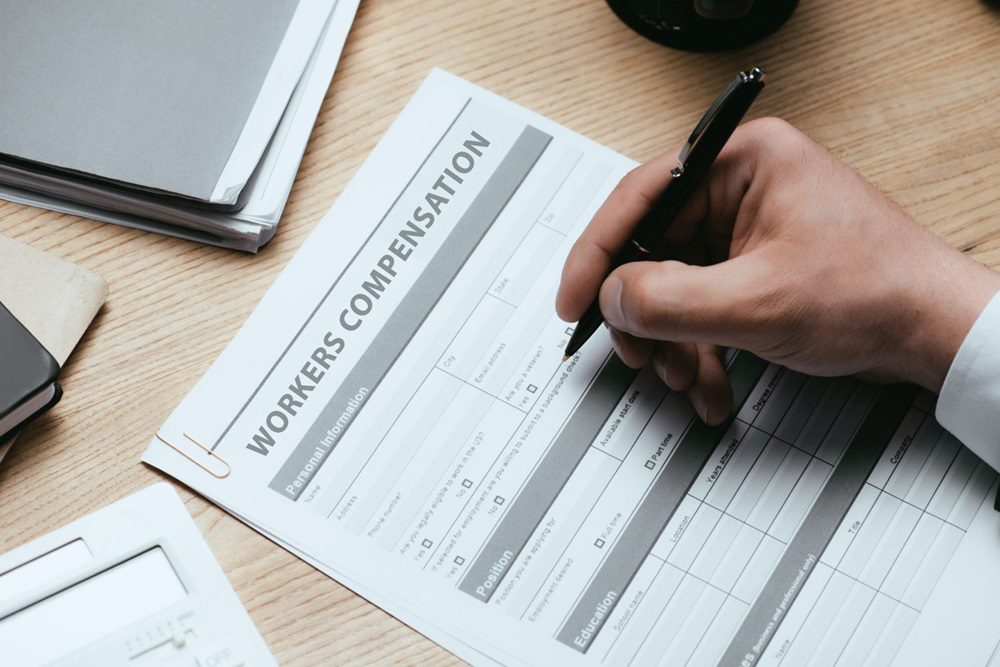A workplace injury can be a disruptive and stressful event for any employee, creating immediate physical, financial, and emotional challenges. Navigating the subsequent workers’ compensation claims process is a crucial step in securing necessary medical treatment and wage replacement benefits. This structured system, mandated in the United States, is designed to provide injured workers with financial support and medical care while protecting employers from lawsuits.
Understanding the sequence of events, from the initial incident to the final resolution, is essential for all parties involved to ensure a smooth and compliant progression. Otherwise, an insurer may deny the claim if they determine the injury isn’t work-related, the reporting deadlines weren’t met, or the medical evidence is insufficient. However, while denials are common occurrences, the rate may differ by location. For instance, one national study estimated a denial rate of approximately 7% and state-specific data from Oregon showed a rate of 10%. (1)
Read on to better understand each stage of the workers’ comp claims process.
Injury Reporting and Employer Responsibilities
The claims process begins the moment a work-related injury or illness occurs. The first and most critical step involves the employee promptly notifying their supervisor or employer. Most states have strict deadlines for this notification, often within 30 days of the incident or the discovery of an occupational illness. Immediate reporting is crucial, as delays can jeopardize the validity of a claim. (2)
Upon notification, the employer must provide the necessary forms and guidance to facilitate the filing of a claim. Their responsibilities include directing the employee to an approved medical provider for immediate treatment and completing an employer’s First Report of Injury. This document is then submitted to the state’s workers’ compensation board and the employer’s insurance carrier. The speed and accuracy of this initial reporting phase set the tone for the entire claim.
However, victims typically have a common question during this period: “How long does it take to get workers’ compensation benefits?” This waiting period is often the most stressful aspect of the process for an injured worker, as medical bills and lost wages can quickly accumulate. Understanding the potential timeline is crucial for managing financial uncertainty and coordinating necessary medical care.
The Insurance Carrier’s Investigation and Initial Decision
Once the claim for benefits is filed with the insurance company, an adjuster is assigned to investigate its validity under the terms of the worker’s compensation insurance policy. This may involve reviewing medical records, interviewing the employee and witnesses, and verifying that the injury is indeed work-related. The adjuster assesses whether the claim meets the legal criteria for compensability under the state’s specific workers’ compensation laws, which also cover payments like death benefits in tragic situations.
Following the investigation, the insurance carrier will issue a Notice of Decision. This formal communication will either accept the claim, deny it, or accept it for medical benefits only while disputing wage loss benefits. If the claim is accepted, the carrier will begin paying for authorized medical treatment and, if applicable, commence temporary disability benefits payments.
The entire process, which includes filing the claim for this initial decision, can take several weeks, depending on the case’s complexity and the state’s administrative efficiency.
Medical Treatment and the Path to Recovery
An approved claim grants the injured worker access to medical care from providers within the employer’s or insurer’s network. The treating physician plays a pivotal role in providing care, documenting the injury and giving progress reports. These medical reports are used to determine the extent of the employee’s impairment and their ability to return to work, either to their former position or to a modified-duty role.
The goal of medical treatment is to achieve Maximum Medical Improvement (MMI). This is a term signifying that the employee’s condition has become stable, and no further significant healing or recovery is expected, even with additional medical treatment. Reaching MMI is an important milestone, as it enables the final assessment of any permanent impairment and the calculation of potential permanent disability benefits.
Navigating Disputes and the Appeals Process
As mentioned, claim denials aren’t uncommon. An insurer may deny a claim for various reasons, such as disputing that the injury occurred at work, questioning the severity of the injury, or citing a failure to follow proper reporting procedures. When a claim is denied, the injured worker has the right to appeal the decision.
The appeals process is a formal legal proceeding. It typically begins with a hearing before a workers’ compensation administrative law judge. During this hearing, both the employee and the insurer present evidence, including medical documentation and witness testimony. The judge then renders a decision.
If either party disagrees with the outcome, further appeals can be made to a higher appeals board and, in some cases, to the state court system. As such, legal representation is essential at this stage due to the complex nature of the proceedings.
Settlement and Case Closure

A workers’ compensation claim can be resolved in several ways. The simplest scenario occurs when an employee fully recovers, returns to work without restrictions, and settles all medical bills, resulting in a straightforward case closure. However, in cases involving permanent impairment, victims can negotiate a settlement.
A settlement is a financial agreement between the injured worker and the insurance carrier that resolves the claim, often in a lump sum or structured payments. This may compensate the employee for permanent disability, future medical expenses, or both. Accepting a settlement typically closes the case permanently, barring the employee from seeking any additional benefits for that specific injury. Therefore, careful consideration and legal counsel are a must before agreeing to any settlement offer.
Key Takeaway
The workers’ compensation claims process is a multi-stage journey with distinct phases, each with its own procedures and requirements. From the critical initial reporting and insurer investigation to medical treatment, potential disputes, and final resolution, each step demands attention to detail and adherence to protocols.
By understanding this structured process, injured workers can effectively advocate for their rights and benefits, ensuring they receive the necessary support for recovery and financial stability following a workplace incident. For specific guidance related to a particular claim, consulting with a qualified professional familiar with state laws is always recommended.
References:
- “What To Do If Your Workers’ Compensation Claim Is Denied”, Sources: https://www.forbes.com/advisor/legal/workers-comp/workers-comp-claim-denied/
- “Workplace Accident Law”, Sources: https://www.justia.com/injury/workplace-accidents/






